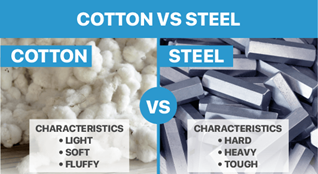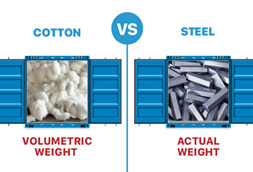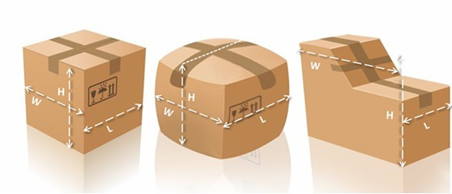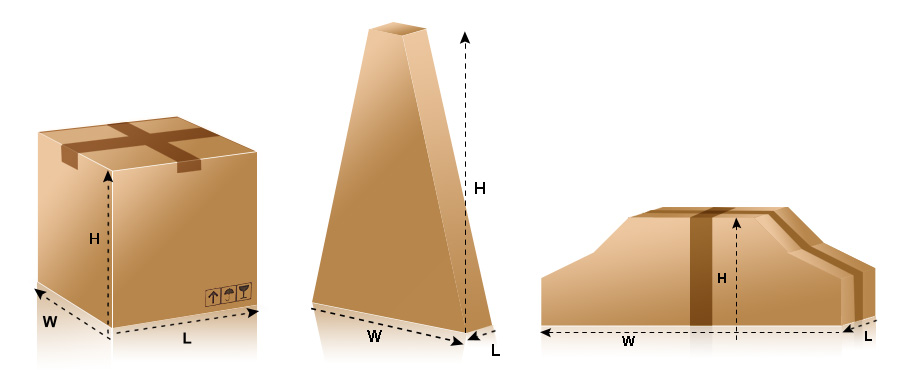TO calculate the shipping cost of package we check whether the package is larger in size or light in weight
- If the package is light in weight, the actually weight is applicable to calculate shipping cost
- If the package is larger in size, the volumetric weight is applicable to calculate shipping cost
All information we need to calculate shipping cost?

- Types of Products
- Product name (Brand or Non-Brand)
- Product’s cost
- How many KGs
- How many CBMs
- Transportation mode (Air Cargo or Sea Cargo)
- Final Destination
How to Calculate Chargeable Weight for Air & Sea Freight Shipments?

Why WKS TRADING & SHIPPING CO LTD do not use gross weight or volume weight of the cargo but the chargeable weight when calculating freight cost?
You see, some goods are heavy, but take very limited space; whereas others are really light but allocates tons of room in the transportation.
Imagine a shipment of cotton and steel. It is quite obvious that a cotton shipment will occupy more space compared to a steel shipment. However, a steel shipment will be weighing more. Should both be charged using volume Weight?


How WKS go about this situation?
We choose the higher value between the volumetric weight and the actual weight of the cargo. This is fair enough because cotton shipments will occupy more space while steel shipments will weigh more. In both cases, WKS will be choosing the measurement with greater value.
What is the calculation formula for Chargeable Weight?
For those of you who simply want the formulas without a detailed explanation, here we go:
To understand the definition of light goods and heavy goods, we need to know what is the actual gross weight, volume weight, and chargeable weight.
Firstly, the actual weight:
Actual Weight, which is the weight obtained from weighing (overweight), including Gross Weight (G.W.) and Net Weight (N.W.). The most common is the actual gross weight.
In air cargo transportation, the actual gross weight is often compared to the calculated volumetric weight, whichever is calculated and charged.
Secondly, the volume weight (Volumetric weight-DIM)
Volume Weight, also named as Volumetric Weight or Dimensions Weight, which is the weight calculated from the volume of the cargo according to a certain conversion factor or calculation formula.

Suppose that Your package has actual weight of 20kg
H= 50cm, L= 70cm, W= 40cm
Volumetric weight will be V. W= (50*70*40)/6000, Volumetric weight (V.W) = 23.3KG
In air cargo transportation, the calculation factor for calculating the volumetric weight is generally 1/6000 (1/6000= 0.000167) so one cubic meter in weight is equal to (0.000167Kgd * 1,000,000) = 167KG.
For example, the actual gross weight of an air cargo shipment is 95KG, and the volume is 1.2 cubic meters (1.2CBM). Calculated according to the coefficient of air transportation 0.000167 (167KG), the volume weight of this cargo is 1.2*167=200.4KG, which is greater than the actual gross weight of 95KG, so this cargo (also called soft, light goods, Light Weight Cargo or Light Cargo/Goods or Low-Density Cargo or Measurement Cargo), air transport will be charged by volume, not actual gross weight.
Another example: the actual gross weight of a shipment air cargo is 560KG, the volume is 1.5CBM, calculated according to the coefficient of air transport 1:167(167KG), the volume weight of the ticket is 1.5 * 167KG = 250.5 kg, less than the actual gross weight of 560KG, so this cargo is named as heavy goods (Heavy Cargo/Goods or High-Density Cargo), So WKS will charge according to the actual gross weight, not the volume weight.
Thirdly, the chargeable weight
Chargeable Weight, referred to as C.W., which is used to calculate the weight of freight or other miscellaneous charges.
The chargeable weight is either the actual gross weight or the volume weight, the chargeable weight = the actual weight VS the volume weight, and the larger one is the weight for calculating the shipping cost.
How to measure volume (volumetric weight or DIM)?
Regular items:
Length (cm) x width (cm) x height (cm) ÷ 6000 = volumetric weight (KG), i.e., 1 CBM ≈ 167KG.
Irregular items:

Irregularly Shaped Air Freight Shipment
The longest (cm) x widest (cm) x highest (cm) ÷ 6000 = volumetric weight (KG), i.e., 1 CBM ≈ 167KG.
This is an internationally accepted algorithm.
In short, 1 cubic meter of weight greater than 167KG is called heavy cargo, and less than 167 kilograms is called foam cargo in China.
Heavy goods are charged according to the actual gross weight, and the foamed goods are charged according to the volumetric weight.
Surface package measurement method

If the package is squeezed by the goods, the plane of the box expands and deforms,
Then calculate according to the longest side of the package.
For example, WKS channel, the actual length of the carton is 15cm, 30cm, and 20cm;
Due to the extrusion of the goods, the length is 18cm, 33cm, and 22cm after sealing.
Then the volume weight = (18 × 33 × 22) / 6000 = 2.2KG,
The actual weight is 2KG,
Then the package calculates the shipping cost by the volume of 2.2KG.
The final billing weight is 3KG.
However, what customers often overlook is the design of the box itself. The size indicated on the box is the inner diameter of the box, it does not contain the thickness of the paper, but actual shipment is measured by the outer dimensions of the box.
PRECAUTIONS
1. CBM is the abbreviation of Cubic Meter, which means cubic meter.
2. In order to make full use of the space and load capacity of the airplane, the heavy cargo and the light cargo will generally be reasonably matched. The air cargo loading is a technical activity – well matched, can make full use of the limited space of the aircraft, and if do well, it can greatly increase the extra profit. If there are too many heavy goods, it will waste space (it will be overweight without filling the space). Too much cargo will waste the load (filled with the maximum weight).
3. The division of heavy goods and light goods by sea is much simpler than that of air transportation. Sea freight consolidation business basically divides heavy goods and light goods according to the standard of 1 cubic meter equal to 1 ton. In the LCL ocean freight, heavy goods are rare, basically light goods, and shipping LCL is calculated according to the volume of freight, compared with air transport according to the weight of the freight is fundamentally different, so it is much simpler. Many people have done a lot of shipping, but have never heard of light goods and heavy goods, because they are basically not used.
4. According to the stowage of the ship, any cargo with a cargo stowage factor less than the ship’s capacity factor is called Heavy Weight Cargo; any cargo with a cargo stowage factor greater than the ship’s tank capacity is called Measurement Cargo/Light Goods.
5. According to the calculation of freight aspect and international shipping business practices, any cargo with a stowage factor of less than 1.1328 m3/ton or 40 cubic feet/ton is called heavy cargo; where the cargo stowage factor is greater than 1.1328 m3/ton or 40 Cubic feet per ton of cargo, called light goods / foam goods.
6. The concept of heavy goods and light goods is closely related to stowage, transportation, storage and billing. WKS TRADING AND SHIPPING CO LTD distinguishes heavy goods, light goods/foam goods according to certain standards.
FOR THE CUSTOMER THAT WKS HELP TO COVER BOTH CUSTOMER CLEARANCE AND TAXES DECLARATION TO THE FINAL DESTINATION, THE FOLLOWING MEASURE IS APPLICABLE TO CALCULATE SHIPPING COST OF ANY CARGO
- Air Cargo (1CBM= 167KG)
- Inland Cargo (1CBM=125KG)
- Sea Cargo (1CBM= 100KG)
Do you need any assistance moving your cargo either via air or sea? We are happy to help you, so contact us now and
